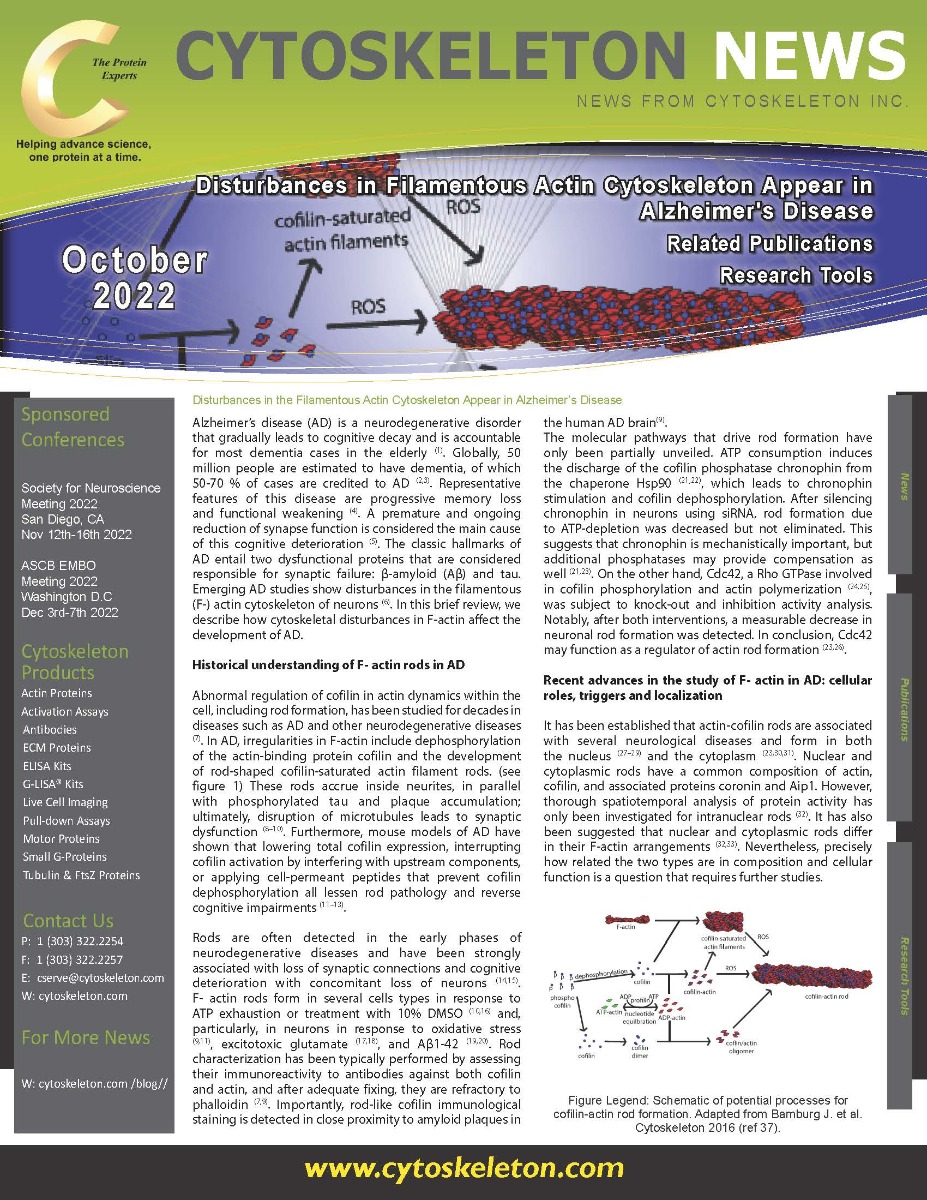Disturbances in the Filamentous Actin Cytoskeleton Appear in Alzheimer’s Disease
- By Cytoskeleton Inc. - Actin News
- Oct 4, 2022

Alzheimer’s disease (AD) is a neurodegenerative disorder that gradually leads to cognitive decay and is accountable for most dementia cases in the elderly (1). Globally, 50 million people are estimated to have dementia, of which 50-70 % of cases are credited to AD (2,3). Representative features of this disease are progressive memory loss and functional weakening (4). A premature and ongoing reduction of synapse function is considered the main cause of this cognitive deterioration (5). The classic hallmarks of AD entail two dysfunctional proteins that are considered responsible for synaptic failure: β-amyloid (Aβ) and tau. Emerging AD studies show disturbances in the filamentous (F-) actin cytoskeleton of neurons (6). In this brief review, we describe how cytoskeletal disturbances in F-actin affect the development of AD.
Also included in this newsletter:
- Actin Tools
- Related Publications

